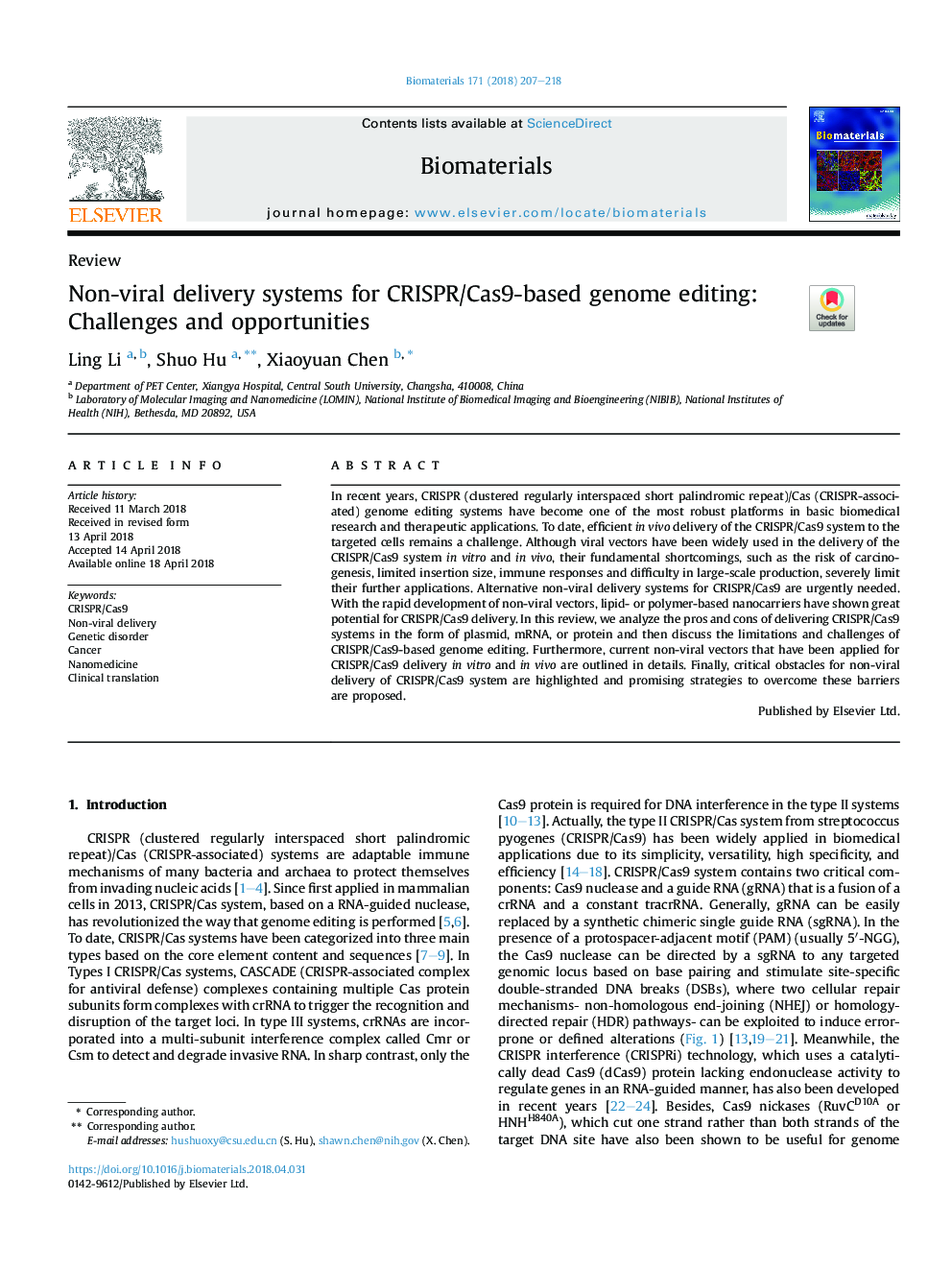| Article ID | Journal | Published Year | Pages | File Type |
|---|---|---|---|---|
| 6484501 | Biomaterials | 2018 | 12 Pages |
Abstract
In recent years, CRISPR (clustered regularly interspaced short palindromic repeat)/Cas (CRISPR-associated) genome editing systems have become one of the most robust platforms in basic biomedical research and therapeutic applications. To date, efficient in vivo delivery of the CRISPR/Cas9 system to the targeted cells remains a challenge. Although viral vectors have been widely used in the delivery of the CRISPR/Cas9 system in vitro and in vivo, their fundamental shortcomings, such as the risk of carcinogenesis, limited insertion size, immune responses and difficulty in large-scale production, severely limit their further applications. Alternative non-viral delivery systems for CRISPR/Cas9 are urgently needed. With the rapid development of non-viral vectors, lipid- or polymer-based nanocarriers have shown great potential for CRISPR/Cas9 delivery. In this review, we analyze the pros and cons of delivering CRISPR/Cas9 systems in the form of plasmid, mRNA, or protein and then discuss the limitations and challenges of CRISPR/Cas9-based genome editing. Furthermore, current non-viral vectors that have been applied for CRISPR/Cas9 delivery in vitro and in vivo are outlined in details. Finally, critical obstacles for non-viral delivery of CRISPR/Cas9 system are highlighted and promising strategies to overcome these barriers are proposed.
Related Topics
Physical Sciences and Engineering
Chemical Engineering
Bioengineering
Authors
Ling Li, Shuo Hu, Xiaoyuan Chen,
